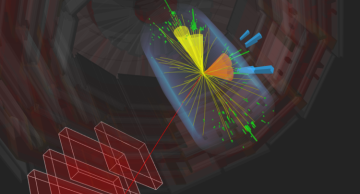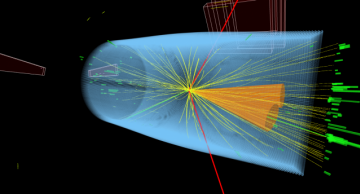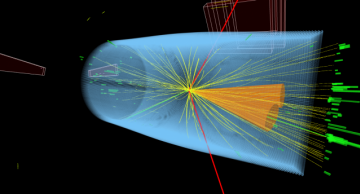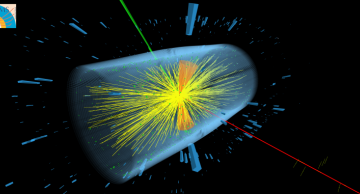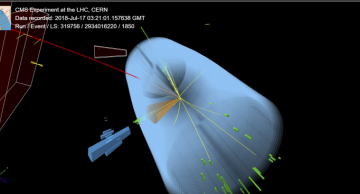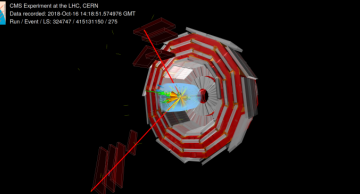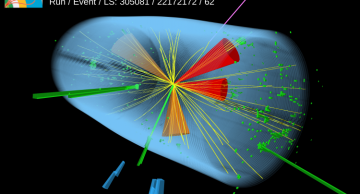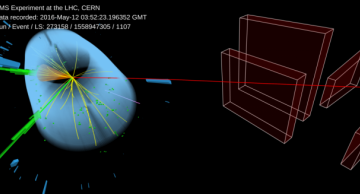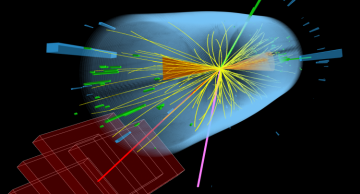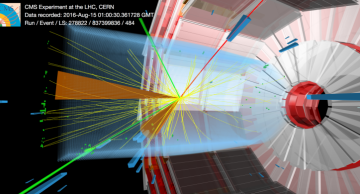Recently, and about two decades after the first solid proof of entanglement between two photons by Anton Zeilinger and his team, the ATLAS and CMS experiments reported the observation of quantum entanglement between the top quark and its…
What does the decay of a bottom quark look like?
Fragmentation, also known as hadronization, is when particles that contain quarks or gluons create other particles via the strong interaction. The fragmentation process cannot be exactly…
Using machine learning to improve the detection of new physics in the interactions of the top quark
Although our theory describing the interactions between fundamental particles is exceptionally successful, it has weaknesses. You may have…
What if new particles modify the behaviour of existing particles, but by only a little bit? In a new result, CMS physicists search for new physics using a technique called Effective Field Theory to study the top quark in a "toy universe".…
A new result by the CMS collaboration accepted by the journal Physical Review Letters demonstrates for the first time that top quarks are produced in nucleus-nucleus collisions. At the same time, this also demonstrates the capability of the CMS…
In 2012 the ATLAS and CMS collaborations discovered a boson with a mass of 125 GeV, i.e. approximately 125 times the mass of the proton, in proton-proton collisions at the CERN LHC. This has marked a milestone in high energy physics, as this…
Measuring the interaction between the Higgs boson and other particles is essential to understand if the particle behaves consistently with predictions. For the International Conference of High Energy Physics 2020, the CMS experiment has released…
The CMS collaboration has achieved the first observation of a ttH process in a single Higgs boson decay channel. The Higgs boson is examined in its decay to two photons when produced alongside a top quark and antiquark. This enables the…
The CMS collaboration has examined for the first time the kinematic dependence of the production of a top quark and a W boson. This gives insight into the quantum interference of top quark production at the LHC and allows more accurate…
For the first time, CMS physicists have measured the production rate of top quark pairs as a function of three experimental observables simultaneously. The new result helps to answer several fundamental questions, among which, the properties of…
For the first time, CMS physicists have investigated an effect called the “running” of the top quark mass, a fundamental quantum effect predicted by the Standard Model.
Mass is one of the most complex concepts in fundamental physics, which went…
The top quark is the heaviest particle in the standard model, and since its discovery in 1995 at the Tevatron collider at Fermilab, its study has become prominent in furthering our understanding of fundamental physics. At the Large Hadron Collider,…
Pagination
- Previous page
- Current page 1
- Page 2
- Next page

